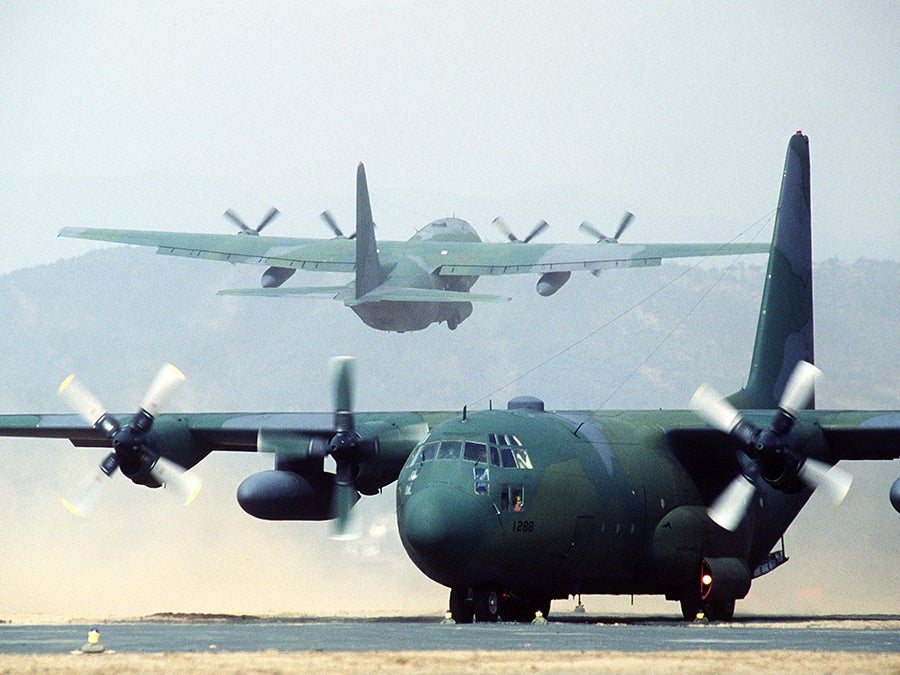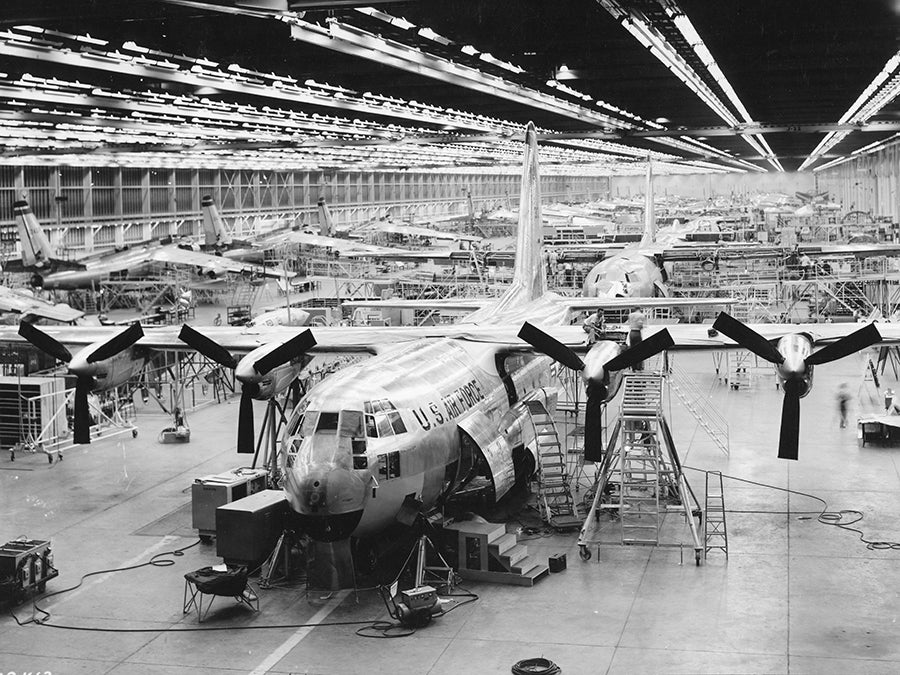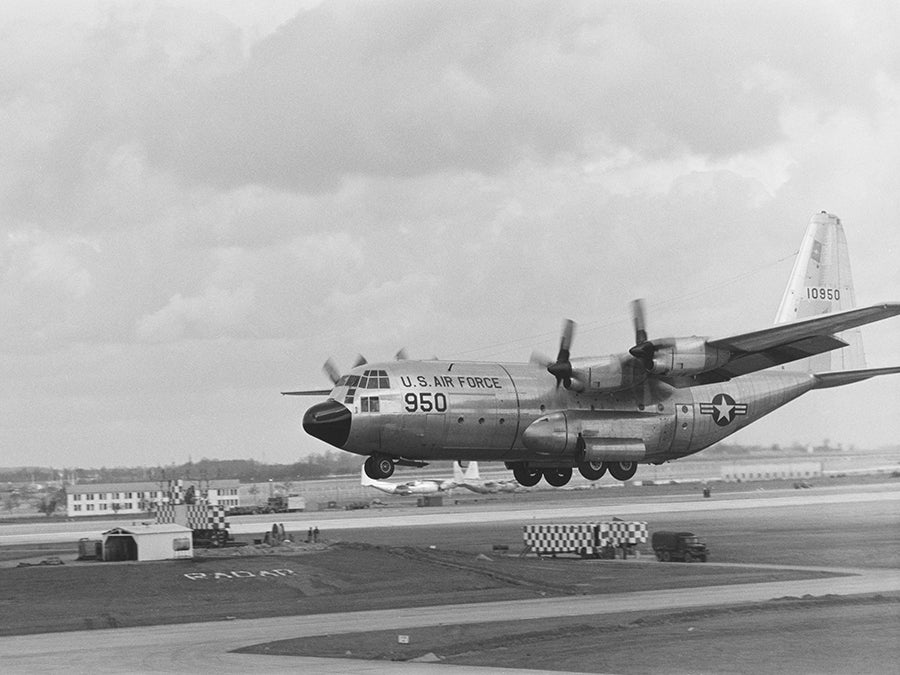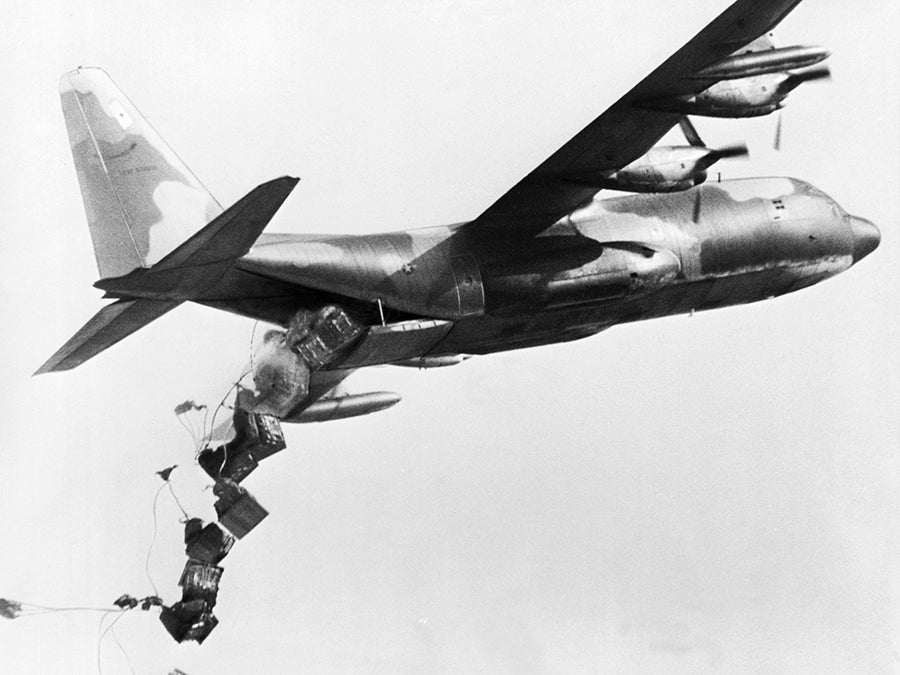
It’s a history steeped in remarkable figures: 54 world records, two million flying hours, operated by 26 different entities across 22 nations, and able to be configured for 17 quite different mission objectives. But now Lockheed Martin’s C-130J Hercules has reached another milestone: the delivery of the 500th airlifter in early 2022.
Calling it a monumental achievement, the company’s vice president and general manager of the air mobility & maritime missions business, Rod McLean, paid tribute to the thousands of people, past and present, that have designed, built, flown, maintained and supported C-130Js all over the world.
“Like its namesake, the C-130J is a legend defined by its strength and power. Yet, it is the people who are part of the C-130J operator, production, supplier and industry partner communities who truly define the Super Hercules.”
The evolution of tactical airlifters
Lockheed Martin is one of several global players in the military airlifter market, but the company has a longstanding contributor to it. Jeff Rhodes, a Lockheed Martin Aeronautics historian, explains that although there were airlifters before the Hercules, it was Lockheed’s (before it merged with Martin Marietta in the mid-90s) Hercules design that fundamentally changed the design and scope of the airborne transporter.
“In World War II, airlifters like the C-46 and C-47 were taildraggers and had to be loaded by hand and couldn’t carry much,” he says. “They could land on dirt or grass but had to be careful not to be too heavy.”
He adds these aircraft really preferred a prepared, level strip — which isn’t always the standard in operational environments. The C-74 was a pure ‘strategic’ transporter and needed a concrete runway. The C-82 and later improved C-119 were the first mostly tactical airlifters but had severe load limitations, and paratroopers and cargo drops had to avoid the twin boom tails.
How well do you really know your competitors?
Access the most comprehensive Company Profiles on the market, powered by GlobalData. Save hours of research. Gain competitive edge.

Thank you!
Your download email will arrive shortly
Not ready to buy yet? Download a free sample
We are confident about the unique quality of our Company Profiles. However, we want you to make the most beneficial decision for your business, so we offer a free sample that you can download by submitting the below form
By GlobalData“They were at least truck height,” Rhodes explains. “The C-123 was the first to combine a relatively low cargo floor, single cargo ramp, but it was originally a glider that became powered. While it had short-field capabilities, it couldn’t carry much.”
It wasn’t until the C-130 came along that almost all these challenges were addressed. Rhodes says it had a low floor and could carry a ‘truly useful load’; its space was ‘versatile and adaptable’ and its four engines on a high wing meant it could get into, and out of, tight spaces.
“It can operate off any surface: prepared, dirt, snow, grass and even concrete. A combination of all those factors made it indispensable,” he says, adding that every other airlifter since the C-130, including Lockheed Martin’s C-141 and C-5, uses the same basic design concept as the Hercules. “It really did set the standards still being followed.”

From Hercules to Super Hercules
The first Hercules rolled off the production line and into the air in 1954. In the almost 70 years since it has played major roles in military conflict, but also other theatres. The C-130J expands this tradition and is available in a plethora of mission configurations, including personnel recovery and humanitarian aid, aerial firefighting, electronic surveillance communication, special operations, aeromedical evacuation, personnel transport, aerial delivery/JPADS, combat delivery, search and rescue, aerial refuelling and tanking, weather reconnaissance, maritime surveillance, gunship/close air support, rapid ground refuelling, armed intelligence, surveillance and reconnaissance and, most recently, commercial operations.
Rich Johnston, director of international business development of air mobility & maritime missions at Lockheed Martin Aeronautics, says the transporter, which today meets the airlift needs of as many as 70 countries, is unrivalled.
“There is no aircraft in aviation history – either fielded or under development – that can match the flexibility, versatility and relevance of the Lockheed Martin C-130 Hercules. The C-130 has earned a reputation as an unequalled workhorse, ready for any mission, anywhere, anytime.”
The first C-130J Super Hercules – the latest variant – was delivered in 1998, two years after its first flight, replacing the C-130H on the production line. It can carry up to 92 troops or six cargo pallets, as an example, whilst the larger C-130J-30 can carry 128 personnel or eight pallets.

It’s a remarkable feat given that just three years before the original C-130 took to the skies, its future looked challenging. In April 1951, 37-year-old Willis Hawkins persuaded then vice president and chief engineer of Lockheed Aircraft Corporation, Hall Hibbard, to submit a proposal to the US Air Force for the Model 82, which would later become the Hercules. At that time Hawkins had only been in the role as head of the company’s advanced design department for two months, meaning he was pinning his career on the proposition.
The call for proposals came after the outbreak of the Korean War. The aircraft needed had to be able to carry troops or cargo of up to 30,000 pounds payload. The tender stated the aircraft must be able to carry 92 infantrymen or 64 paratroopers with a combat radius of 1,100 nautical miles or, alternatively, cargo more than 960 miles; it needed to be able to operate from short, unprepared airstrips of clay, sand or humus soil; to be able to slow to 125 knots for paradrops and even slower for assault landings; to have a rear ramp operable in flight for heavy equipment drops and side doors for troop drops; handle bulky and heavy equipment including bulldozers, artillery pieces and trucks; and to fly with one engine out.
Despite taking the risk, and later stating he could see an issue with the airlifter, Hawkins’ positivity was proved right. “The C-130 is not exactly an attractive aircraft,” he said, but added it is still in production and still doing the job it was designed for. Some had questioned the appeal of the airlifter, asking who would want to buy it? However, Irv Culver, one of the engineers on the project was more optimistic, saying: “If we make it right the first time, we could sell it to anybody.” The rest, as they say, is history.
The future of tactical airlifters
The latest C-130J carries this tradition onwards, offering mission versatility that has been seen in aircraft that have gone before it and those on offer now, according to Rhodes, such as the C-130J-30 combat delivery aircraft, the KC-130J tactical tanker, the US Coast Guard HC-130J search and rescue platform, the US Air Force’s HC-130J, used for search and rescue as well as tanking, the MC-130J used for special operations and tanking, and the LM-100J commercial Super Hercules.
“One of the C-130’s hallmarks is that it is in a constant state of evolution and adaptability – in large part to meet operator’s demands,” says Johnston. “Evolution is a core part of the C-130’s DNA and I think we will only continue to adapt and expand to meet operator mission requirements.”

Whilst military interest in aircraft is first documented as far back as 1908, it wasn’t until the Second World War that the ability to move substantial numbers of troops or cargo at once was shown to be tactically critical. As that conflict progressed, armed forces looked to utilise large commercial aircraft in the absence of any true airlifter. Although they had their limitations – some quite significant – they proved their worthiness; hence the tender by the US just a few years later. Strategists had determined what they thought worked, what didn’t and how that could be addressed.
Today’s airlifter is nothing like those of yesteryear and pilots of those times would be in awe of modern capabilities we now have. Between Lockheed Martin, Boeing, Kawasaki, Airbus and other Russian and Chinese developers, the future of the airlifter is unquestionably secure, undoubtedly innovative and ultimately critical as the practicalities of warfare continue to evolve. Events of recent months have shown that wars will continue to be fought in the real world.
The Hercules will be a major contributor for years to come, says Johnston. “From landing at the world’s highest air strip in the Himalayan Mountains to supporting key missions in Antarctica, the C-130 continues to meet all mission requirements and demands,” he adds. “Versatility has been the key to the C-130’s success in the past and will continue to be a major differentiator in the decades of Hercules operations to come.”







